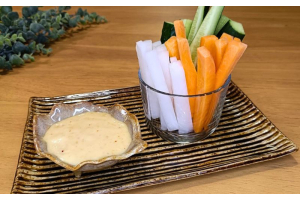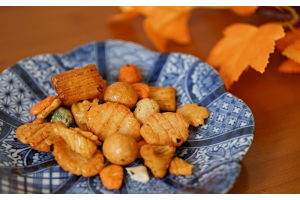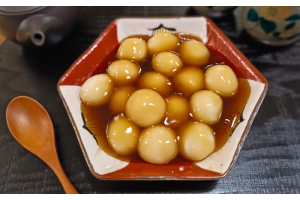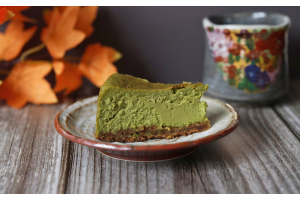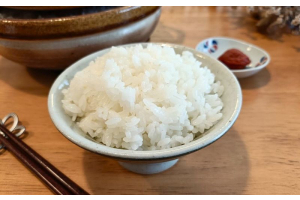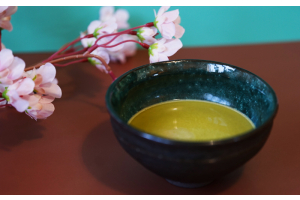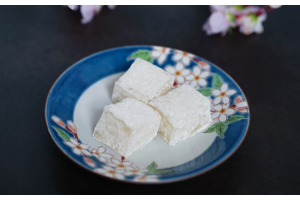We use cookies to make your experience better. To comply with the new e-Privacy directive, we need to ask for your consent to set the cookies. Learn more.
NIKUJAGA -Japanese Simmered Meat and Potatoes
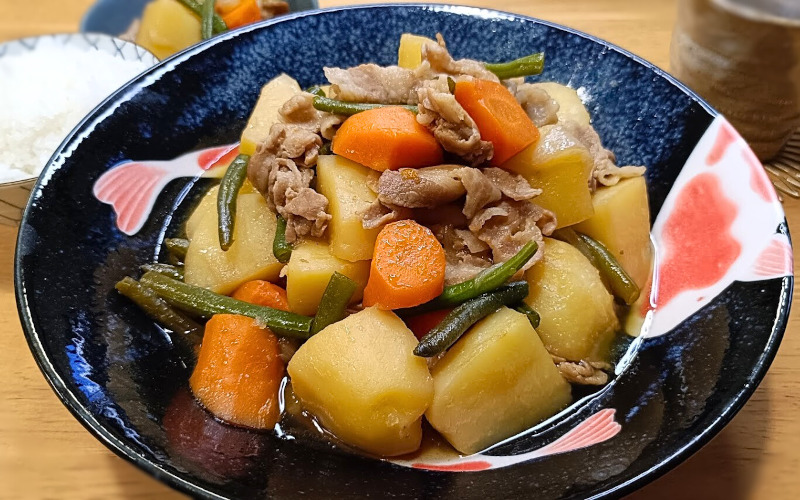
NIKUJAGA is a traditional Japanese home-style dish made by simmering thinly sliced meat (usually pork or beef), potatoes, and vegetables in a sweet-savory broth of soy sauce, mirin, sake, and dashi.
The name "nikujaga" comes from "niku" (meat) and "jagaimo" (potatoes).
It’s a comforting and nostalgic dish in Japan, often served in family meals. The flavors deepen over time, making it even tastier the next day.
- 5 potatoes (about 500–600g)
- 300g thinly sliced pork belly (or beef belly)
- 1 carrot
- 1 onion
- Green beans or green peas (optional, for color)
Seasoning:
- 400ml water
- 4 tbsp soy sauce
- 4 tbsp mirin
- 4 tbsp sake
- 2 tbsp sugar
- 1 tsp (5g) dashi granules
Instructions
Preparation
・Wash, peel, and cut the potatoes into large bite-size pieces.
・Cut the onion into wedges.
・Cut the carrot into irregular bite-size pieces (Japanese "rangiri" style).
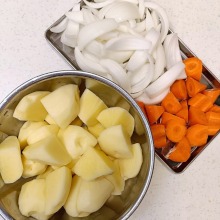
1. Slice the meat.
Cut thinly sliced pork belly into pieces about 4 cm (1.5 inches) wide.
If you don’t have sliced pork belly, use a block and slice it thinly (about 3 mm thick), then cut each slice into 4 cm wide pieces.

2. Cook the meat.
Heat a little oil (not listed in ingredients) in a pot over medium heat.
Add the sliced meat and cook until it is no longer pink.

3. Add vegetables.
Add the potatoes, carrots, and onions. Stir-fry them lightly with the meat.
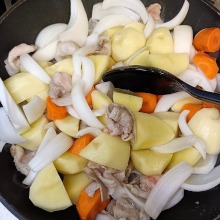
4. Add seasonings.
Pour in the water, soy sauce, mirin, sake, sugar, and dashi granules.
Bring to a boil, then skim off any scum from the surface.
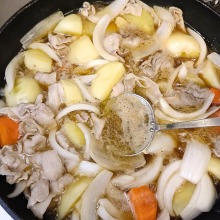
5. Simmer with a drop lid.
Place a piece of cooking paper (otoshibuta) directly on the surface.
Simmer over medium heat for about 20 minutes.

6. Add green vegetables and lightly reduce the liquid.
Remove the drop lid. Add green beans or green peas (if using), and continue simmering over medium heat for another 5 minutes, until the liquid is slightly reduced and the ingredients are well coated.

7. Serve.
Ready to eat! It's delicious freshly made, but letting it cool once helps the flavors soak in. Reheat gently before serving.
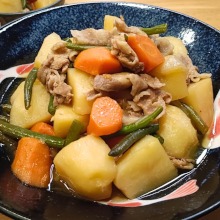
Be careful not to reduce the liquid too much — leaving a little broth helps keep the ingredients moist and enhances the flavor.
This dish features a sweet soy-based flavor, but feel free to adjust the amount of sugar to your taste.
For an even more authentic Japanese touch, try simmering it with shirataki konnyaku noodles if available.




